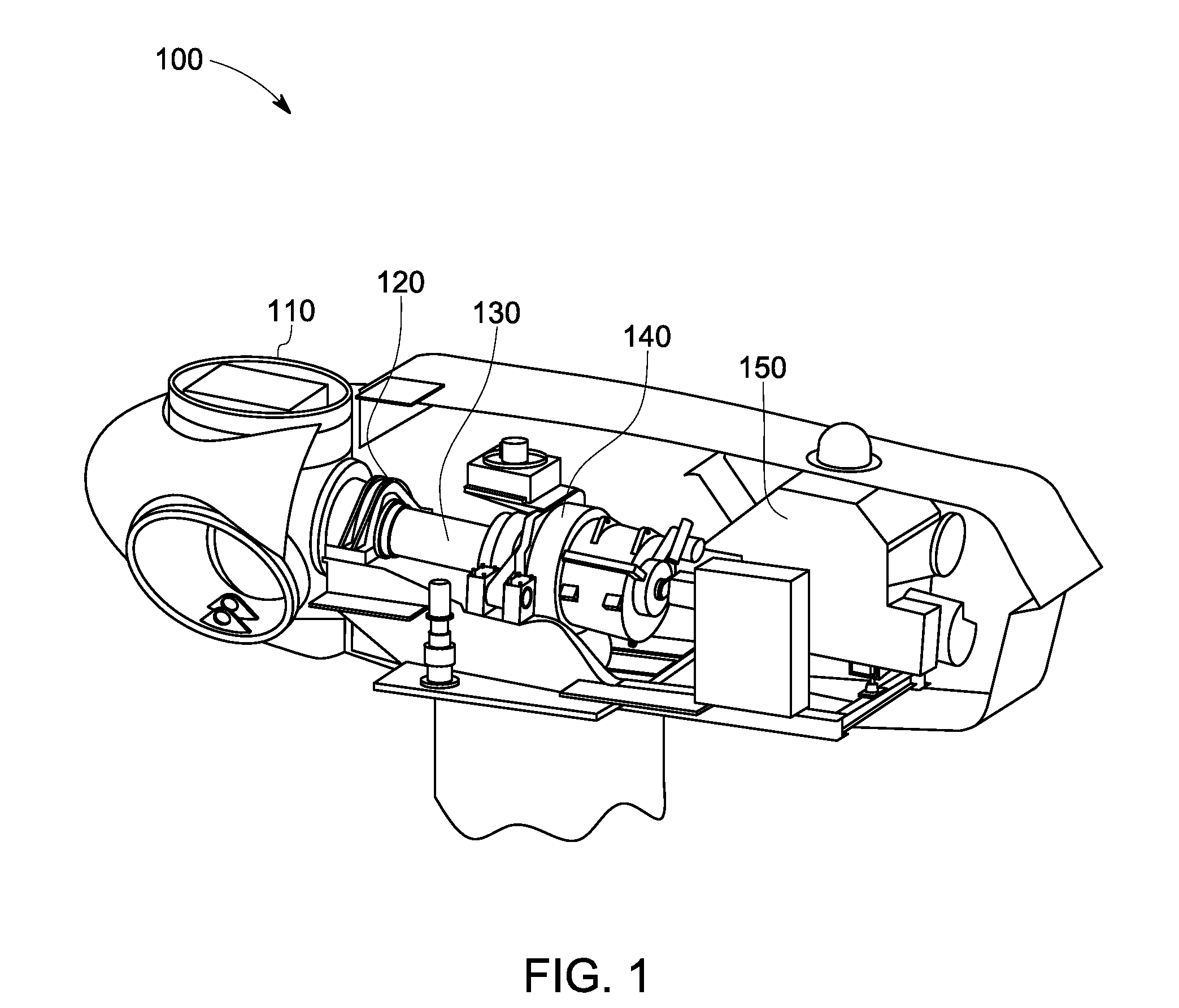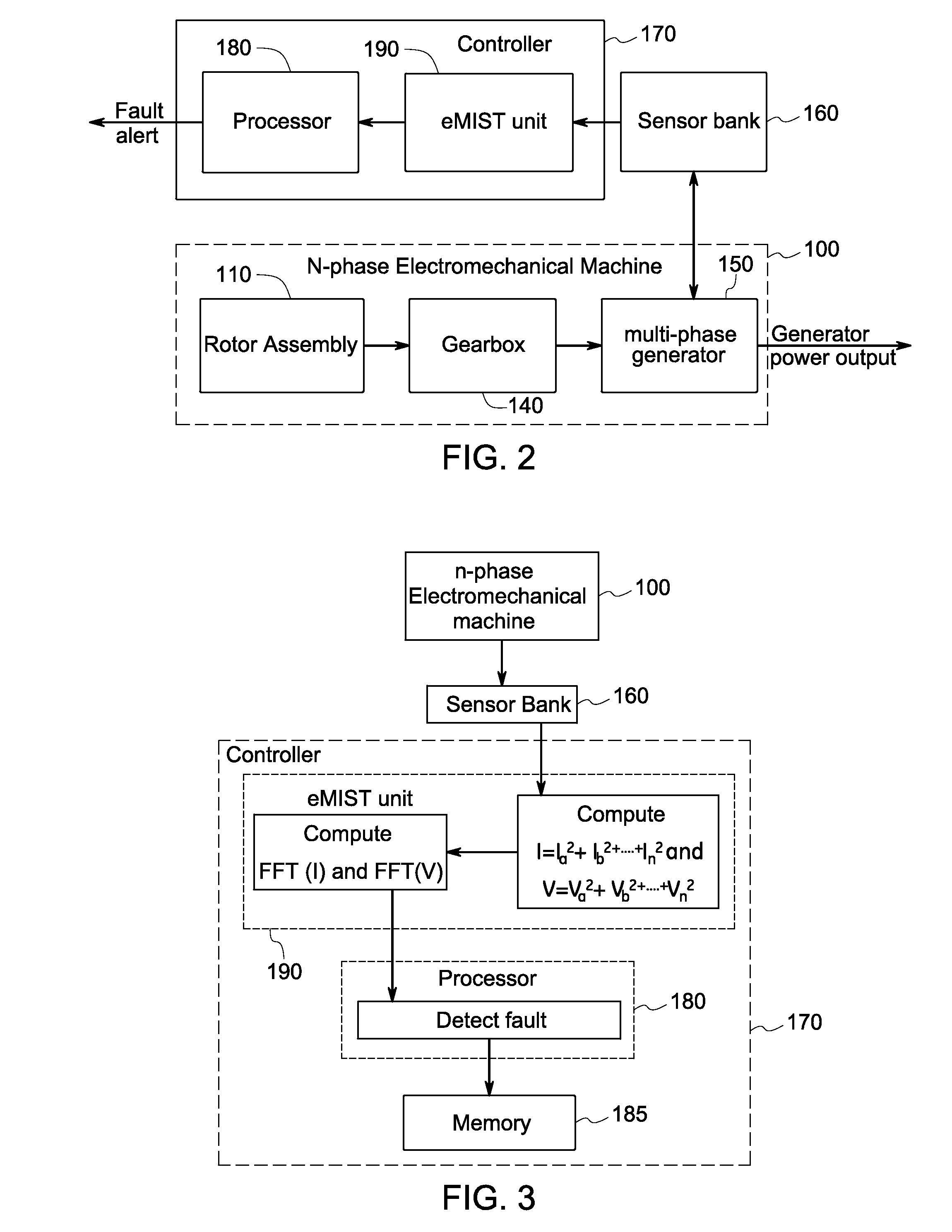Fault detection based on current signature analysis for a generator
a generator and current signature technology, applied in the direction of machines/engines, mechanical equipment, instruments, etc., can solve the problems of signal background noise, torque oscillation, sensitivity to the installation position,
- Summary
- Abstract
- Description
- Claims
- Application Information
AI Technical Summary
Benefits of technology
Problems solved by technology
Method used
Image
Examples
Embodiment Construction
[0020]An electrical multi-phase imbalance separation technique for high sensitivity detection of faults in an electromechanical machine (EMM) including drive-train abnormalities and bearing faults is described herein. The technique provides for differentiating a deteriorated EMM component's condition from normal or admissible conditions based on possibly subtle changes in the magnitude of fault signatures. The dominant components in the stator current of a typical electromechanical machine are the supply fundamental and harmonics, the eccentricity harmonics, the slot harmonics, the saturation harmonics, and other components from unknown sources including environmental noise. Since such dominant components exist before and after the presence of a bearing fault, a large body of the information they carry is not related to the bearing fault. In this sense, they are basically “noise” to the EMM fault detection problem. Comparatively, the components injected by a drive-train fault in the...
PUM
| Property | Measurement | Unit |
|---|---|---|
| frequency | aaaaa | aaaaa |
| electrical signals | aaaaa | aaaaa |
| current | aaaaa | aaaaa |
Abstract
Description
Claims
Application Information
 Login to View More
Login to View More - R&D
- Intellectual Property
- Life Sciences
- Materials
- Tech Scout
- Unparalleled Data Quality
- Higher Quality Content
- 60% Fewer Hallucinations
Browse by: Latest US Patents, China's latest patents, Technical Efficacy Thesaurus, Application Domain, Technology Topic, Popular Technical Reports.
© 2025 PatSnap. All rights reserved.Legal|Privacy policy|Modern Slavery Act Transparency Statement|Sitemap|About US| Contact US: help@patsnap.com



